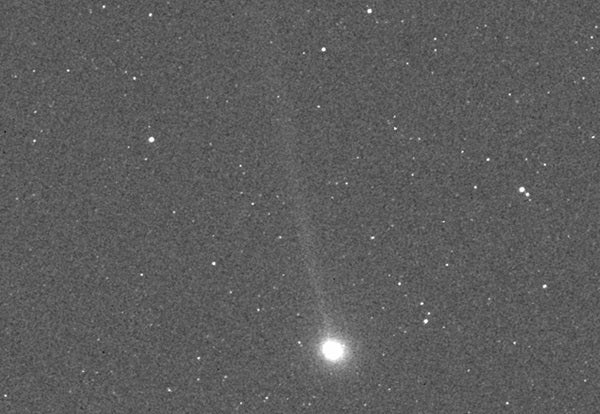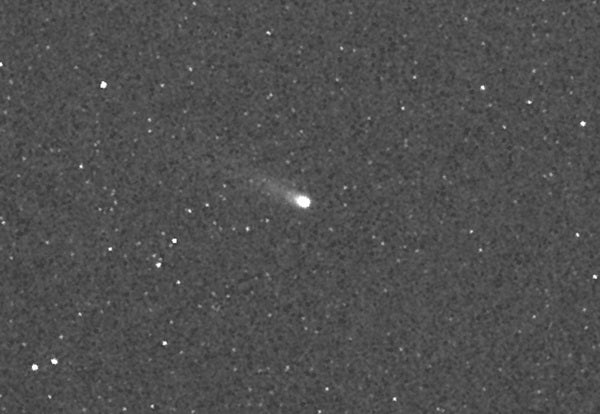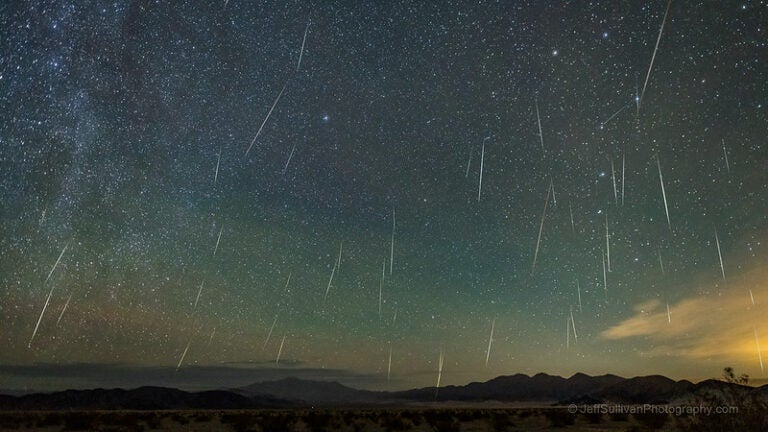MESSENGER’s cameras have been acquiring targeted observations of Encke since October 28 and ISON since October 26, although the first faint detections didn’t come until early November. During the closest approach of each comet to Mercury, the Mercury Atmospheric and Surface Composition Spectrometer (MASCS) and X-Ray Spectrometer (XRS) instruments also targeted the comets. Observations of ISON conclude November 26, when the comet passes too close to the Sun, but MESSENGER will continue to monitor Encke with both the imagers and spectrometers through early December.
The spacecraft has a view of the comets very different from that of Earth-based observers. “MESSENGER imaged Encke only a few days before its perihelion when it was at its brightest,” said Ron Vervack of the Johns Hopkins University Applied Physics Laboratory in Laurel, Maryland. “That we are so close to the comet at this time offers a chance to make important observations that could shed light on its asymmetric behavior about perihelion.”
In contrast, ISON did not pass as close to Mercury, but the comet was between Earth and Mercury when it passed closest to MESSENGER. “We saw the side opposite to that visible from Earth,” said Vervack, “so our images and spectra are complementary to observations from Earth made at the same time and could aid in understanding the variable activity of the comet as it approached the Sun.”
On the day that Encke was closest to Mercury, the MDIS wide-angle camera scanned the comet with all of its 12 filters while the instrument’s Narrow-Angle Camera (NAC) snapped images of the rotating comet every 10 minutes to capture a full 360° view. The imaging campaign for ISON was similar, with the NAC capturing a series of stills every 30 minutes.
Scientists are still combing through the data collected by MASCS, but there are already confirmed detections of several molecules and atoms, including OH, NH, CS, oxygen, carbon, sulfur, and hydrogen. “Far ultraviolet observations can’t be made from ground-based observatories, and only a few instruments in space have been able to look at the comets in the ultraviolet,” said Vervack. “The MASCS observations are therefore of great interest.”
Scientists were also hoping to obtain the first definitive detections of cometary X-ray emission from silicon, magnesium, and aluminum. “NASA’s Chandra X-ray space telescope has observed ISON and Encke and seen X-ray emission from them both,” Vervack said. “We are able to make these observations when both comets are closer to the Sun, so the X-ray emissions have the potential to be much more intense.” However, a series of large solar flares during the observations increased the contaminating background in the X-ray spectra and have complicated the analysis. “We can’t help what the Sun does, but we’re going to analyze the data carefully to see if there are any detections to be had,“ said Vervack.
Taken together, the MESSENGER observations offer a varied science investigation of the comets. “Whereas the MDIS images will provide a global picture of the comet coma morphology, MASCS observations will inform us about the composition of the cometary ices, and XRS may be able to tell us what the dust is made of,” Vervack said.
“Comet encounters were not considered when the MESSENGER mission was designed,” said Sean Solomon of Columbia University in New York. “If Encke and ISON share a few of their secrets on the formation and evolution of the solar system, the MESSENGER team will be delighted with the scientific bonus.”











